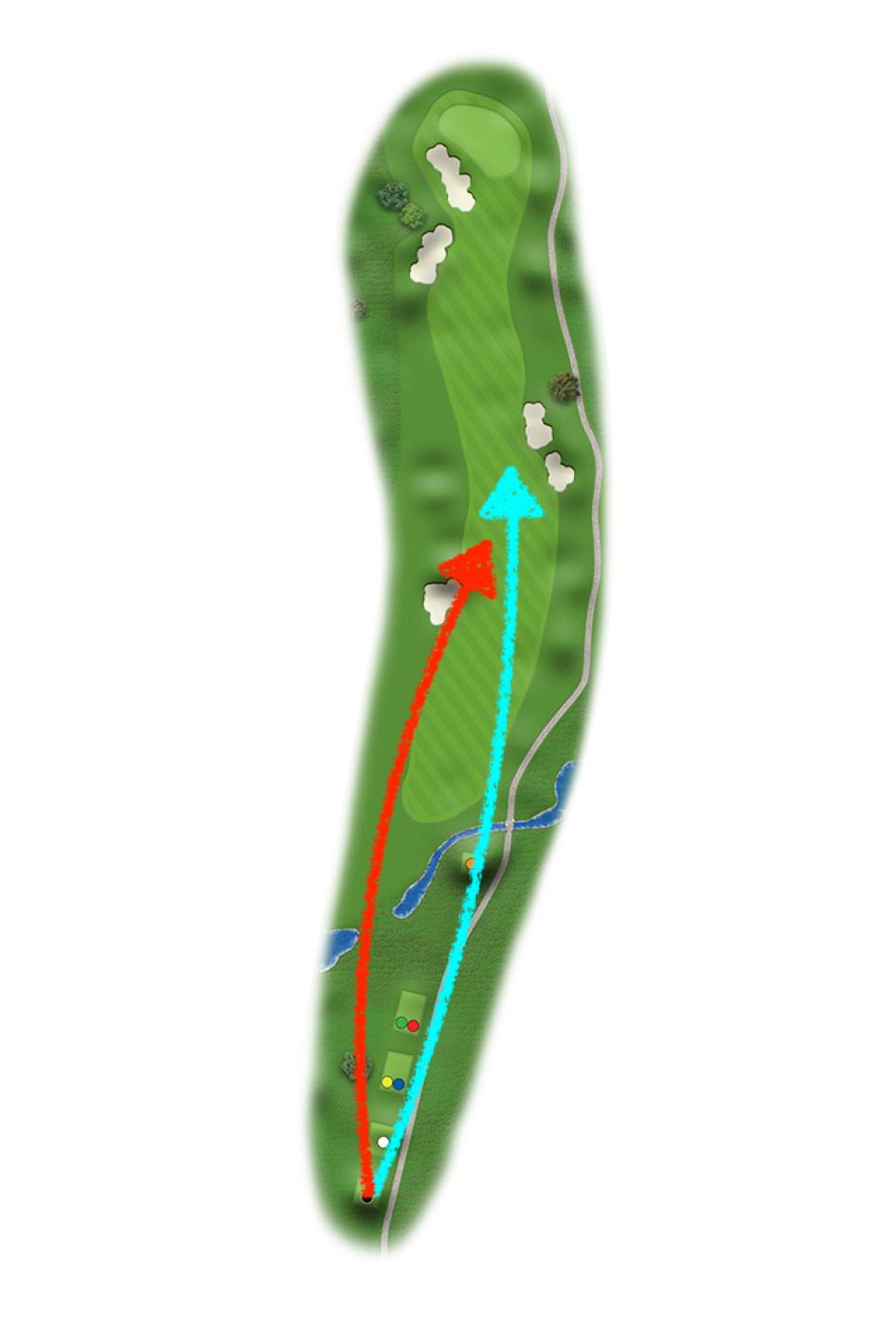All week, European captain Luke Donald emphasised the importance of fast starts. Get up early in your matches, because there’s an army of historical data which shows the first pairing to take the lead usually go on to win.
Whether it’s correlation or causation, for intangible or tangible reasons is a little unclear. But a fact is a fact, so fast starts was the strategy of choice. Which brings us to the first hole at Marco Simone.
The opening hole runs 450 yards, uphill and doglegs slightly to the left. Two different bunkers flank the fairway landing area on either side.
The European team went 11-4-13 on the hole this week, which equates to winning it 39 percent win of the time, halving it 46 percent of the time, and losing it only 14 percent. It’s a nice record that probably wasn’t by coincidence.
Donald crafted an emotional and analytical strategy on this hole. He forced players to play for $100 matches on that hole during practice rounds, and three-hole money matches between themselves to help them get into an aggressive mindset early.
“As a team we knew getting off to a fast start was important,” Donald said.
But the first was also one of the key holes analytics helped sway the outcome. Shane Lowry even jokingly alluded to it during the winner’s press conference with a throwaway joke.
“All the Americans slice it,” Lowry said in jest.
That, of course, is a joke. But like many jokes, it has a kernel of truth: a vast majority of key American players tend to play left-to-right fades. Collin Morikawa, Brooks Koepka, Max Homa and Scottie Scheffler, among others. The European players, by contrast, possess more players in their ranks who either naturally or tend towards right-to-left draws. Players like Rory McIlroy, Tommy Fleetwood, Matt Fitzpatrick, Justin Rose, Sepp Straka, Nicolai Hojgaard and Ludvig Aberg.
Identifying that as a noteworthy difference in an era where both sides’ players have very similar styles, the European team sought to amplify this advantage by using the grandstand surrounding the first tee to pitch the hole slightly to the left. They also grew out the rough on either sides to exaggerate misses, and Donald revealed that the first fairway was one of a number that “were pinched-in a little on the left”.
This had the effect of magnifying the natural right-to-left shape of the hole, which in theory benefitted the team.
On Sunday, it worked.
All 24 players’ first tee shots on Sunday:
Scheffler
Rahm
Morikawa
Hovland
Cantlay
Rose
Burns
Rory
Homa
Fitzpatrick
Harman
Hatton
Koepka
Aberg
Thomas
Straka
Schauffele
Hojgaard
Spieth
Lowry
Fowler
Fleetwood
Clark
Macintyre
— LKD (@LukeKerrDineen) October 1, 2023
The way Europeans played the hole basically divided down two lines: players most comfortable hitting a draw usually pulled driver and leaned on that shot shape shape (Fitzpatrick, Aberg, Fleetwood and Straka each did this).
“That hole just really fits my eye,” Straka said.
Players who are natural faders of the ball dropped down to their 3-wood and hit a draw, which is a common strategy fade players use when they need to work the ball right-to-left (Hovland did this).

McIlroy, Hatton and Rahm chose the most unique route: they hit high, hard, cut drivers, which is a go-to shot of theirs under pressure.
Regardless, you can’t argue with the results. On Sunday, when all 24 players played the hole, the Europeans hit double the amount of fairways as their opponents (six to three) and boasted a 5-2-5 record on the hole.
It was a clever lane cleared for lots of fast starts, with a trophy waiting for them at the end.
• • •
This article was originally published on golfdigest.com

